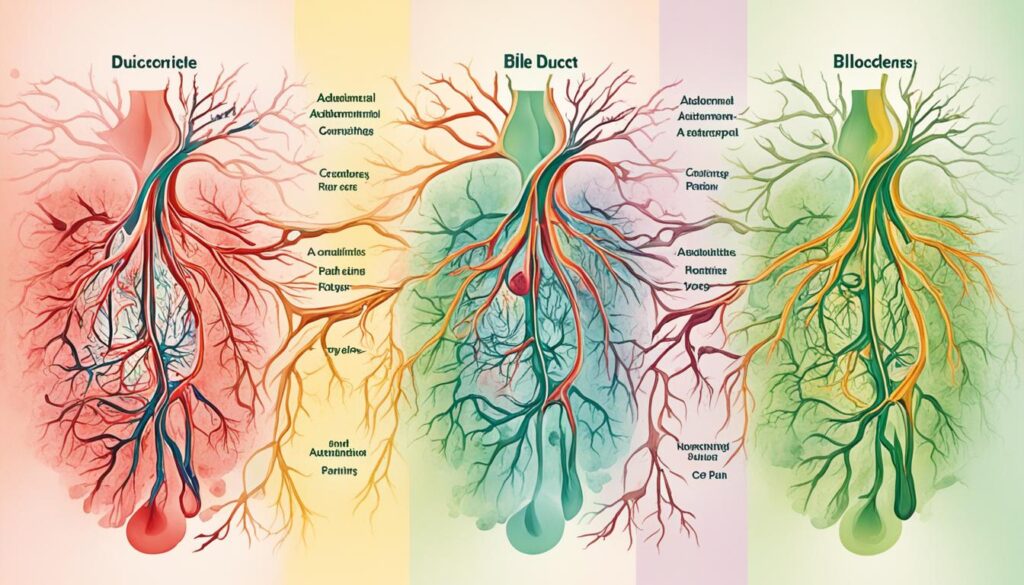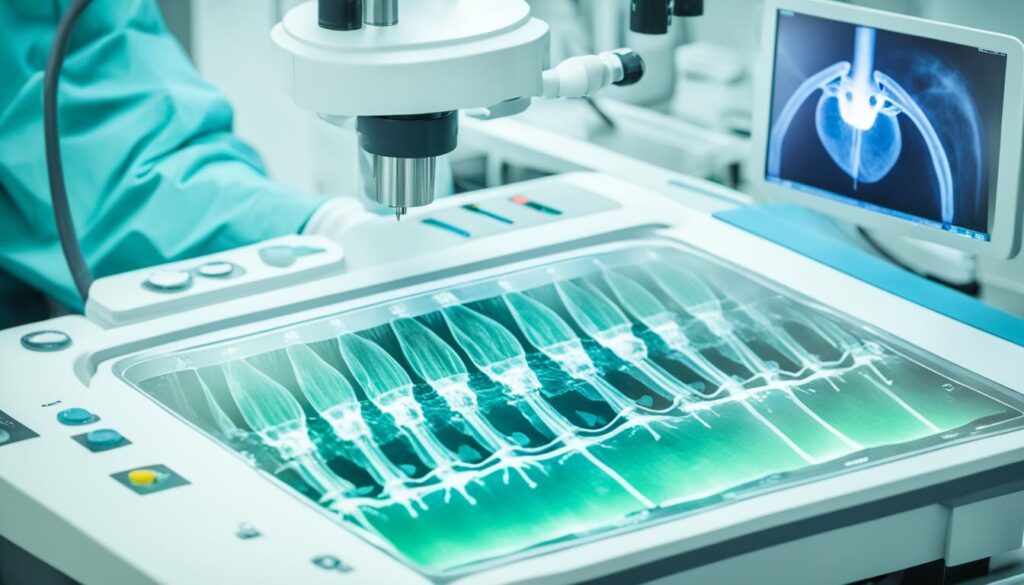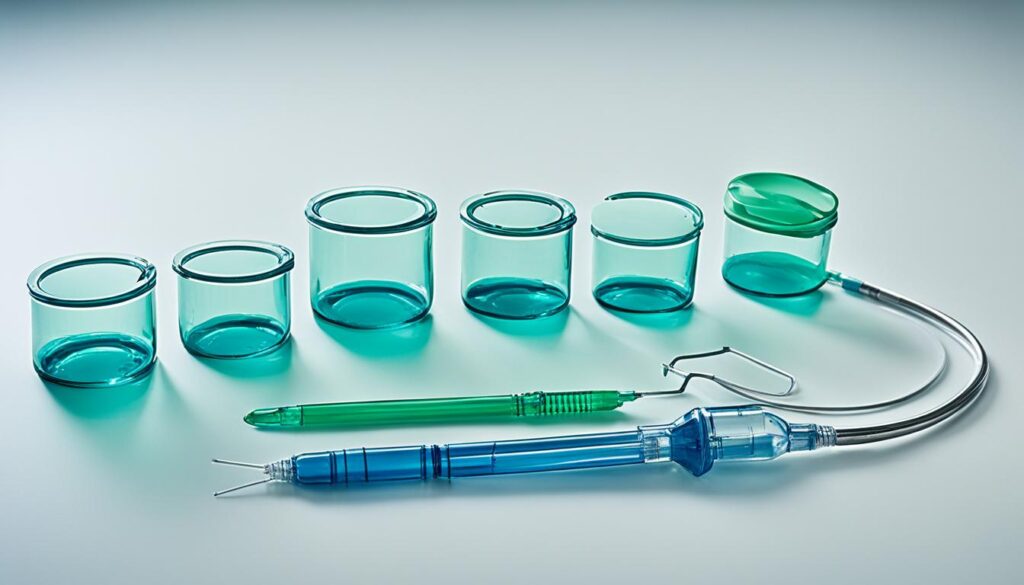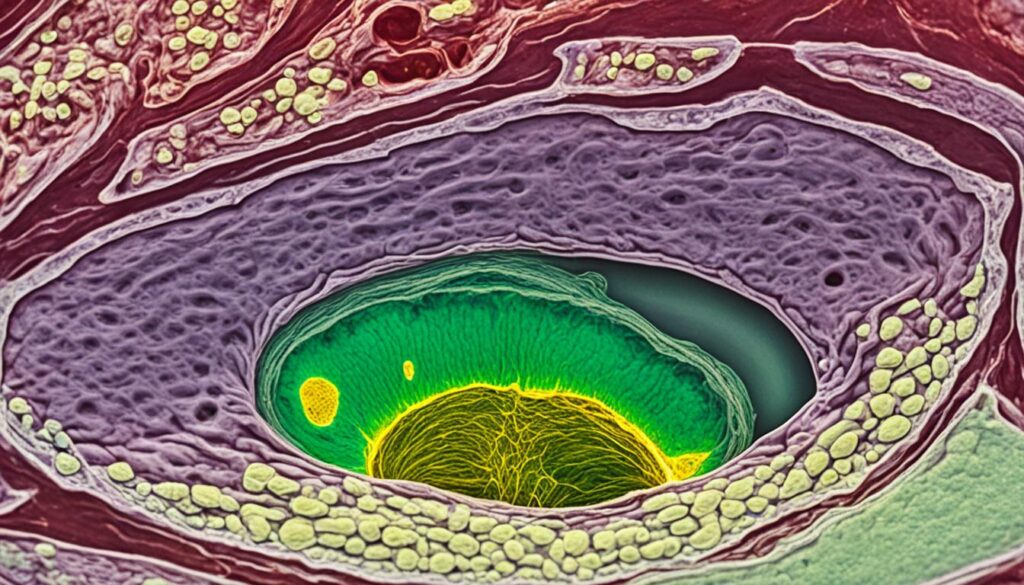Welcome to our informative article on bile duct disorders. If you’re experiencing any of the following symptoms – abdominal pain, jaundice, nausea, vomiting, loss of appetite, weight loss, fatigue, fever, chills, itching, light brown urine, or clay-colored stools – it’s essential to understand their significance. These symptoms could be indicative of a bile duct disorder, which requires medical attention. It’s crucial to recognize these symptoms early on to ensure prompt diagnosis and treatment.
Table of Contents
ToggleIn the following sections, we will provide detailed insights into the various aspects of bile duct disorders, including their causes, risk factors, common symptoms, diagnostic tests, treatment options, and prevention measures. We aim to provide you with comprehensive knowledge to help you make informed decisions about your health.
Throughout this article, we will use relevant SEO keywords, such as bile duct disorder symptoms, abdominal pain, jaundice, nausea, vomiting, loss of appetite, weight loss, fatigue, fever, chills, itching, light brown urine, and clay-colored stools. It’s our priority to optimize this content for search engines while delivering valuable information to our readers.
Now, let’s dive into the world of bile duct disorders and gain a deeper understanding of this condition.
Understanding Biliary Disease
Biliary disease encompasses a range of conditions that affect the bile ducts, gallbladder, and other vital structures involved in the production and transportation of bile. Bile is a fluid produced by the liver to aid in digestion, and it plays a crucial role in breaking down fats.

The bile produced in the liver travels through the bile ducts, eventually reaching the small intestine where it helps with the absorption of fats. However, if any part of this intricate system becomes blocked or diseased, it can lead to severe complications and impact the overall digestive process.
What are the Risk Factors?
- Heredity: Some individuals may have a genetic predisposition to developing biliary disease.
- Increasing Age: The risk of developing biliary disease tends to increase with age.
- Obesity: Being overweight or obese can increase the likelihood of developing biliary disease.
- High-Fat Diet: Consuming a diet high in fats can contribute to the development of biliary disease.
- Gastrointestinal Conditions: Certain gastrointestinal conditions, such as Crohn’s disease or ulcerative colitis, may increase the risk.
- Prescription Medications: Certain medications, such as those used to treat cholesterol or hormonal imbalances, can potentially contribute to biliary disease development.
Understanding the risk factors associated with biliary disease can help individuals take preventive measures and make informed choices regarding their lifestyle and medication use. It is important to consult with a healthcare professional to assess individual risk and adopt appropriate preventive strategies.
Common Symptoms of Bile Duct Disorders
While symptoms of bile duct disorders may vary, there are common symptoms that may indicate a problem. It is important to be aware of these symptoms and seek medical advice if you experience any of them.
1. Jaundice
Jaundice is a common symptom of bile duct disorders. It is characterized by the yellowing of the skin and eyes due to the buildup of bilirubin, a yellow pigment, in the body.
2. Abdominal Pain
Abdominal pain, especially in the upper right side, is another common symptom of bile duct disorders. This pain may be dull, sharp, or cramp-like and can range from mild to severe.
3. Nausea and Vomiting
Feeling nauseous and experiencing episodes of vomiting can be indications of a bile duct disorder. These symptoms may occur due to the disruption of normal digestion caused by the dysfunction of the bile ducts.
4. Loss of Appetite and Weight Loss
A decrease in appetite and unintended weight loss can be symptoms associated with bile duct disorders. These symptoms may be a result of the body’s inability to properly digest and absorb nutrients.
5. Fatigue
Feeling tired or fatigued even after adequate rest is another potential symptom of bile duct disorders. This fatigue may be due to the body’s increased metabolic demands as it tries to compensate for the disruption in bile duct function.
6. Fever and Chills
Developing a fever and experiencing chills can be signs of an infection or inflammation in the bile ducts. These symptoms should not be ignored and should be evaluated by a healthcare professional.
7. Itching
Itching, medically known as pruritus, can occur in bile duct disorders. The accumulation of bile acids in the body can lead to itching, which is typically more intense on the palms of the hands and soles of the feet.
8. Changes in Urine and Stool
Bile duct disorders may cause changes in the color and consistency of urine and stool. The urine may become darker in color, while the stool may appear lighter or clay-colored. In some cases, the stool may also become greasy or oily.

If you experience any of these symptoms, it is important to consult a healthcare professional for a proper evaluation and diagnosis. Early detection and treatment of bile duct disorders can help prevent further complications and improve overall health and well-being.
Diagnostic Tests for Bile Duct Disorders
When it comes to diagnosing bile duct disorders, several diagnostic tests are available to healthcare professionals. These tests are instrumental in identifying the presence of a bile duct disorder and making an accurate diagnosis. Let’s take a closer look at some of the most common diagnostic tests used:
Blood Tests
Blood tests can provide valuable insights into the functioning of your liver and help detect any abnormalities. By measuring specific liver enzymes and other markers in your blood, healthcare professionals can assess your liver’s health and identify potential signs of a bile duct disorder.
Liver Function Tests
This type of test provides a comprehensive evaluation of your liver’s overall function and can help identify any abnormalities in bile production or flow. Liver function tests assess various markers, such as bilirubin levels, liver enzymes, and albumin levels, to gain a comprehensive understanding of your liver’s health.
Ultrasound
Ultrasound is a non-invasive imaging technique that uses sound waves to produce detailed images of the organs within your abdomen. It can help visualize the bile ducts, gallbladder, and liver, allowing healthcare professionals to identify any structural abnormalities or blockages that may be causing a bile duct disorder.
Endoscopic Ultrasound
Endoscopic ultrasound combines endoscopy with ultrasound technology to provide more detailed images of the bile ducts and surrounding structures. It allows for a closer examination of the walls and linings of the bile ducts, aiding in the detection of any abnormalities or abnormalities.
CT Scan
A CT scan uses X-rays and computer-generated images to create cross-sectional views of your abdomen. This imaging test can provide detailed information about the bile ducts, gallbladder, and liver, helping healthcare professionals identify any blockages, tumors, or other abnormalities.
MRI
MRI (Magnetic Resonance Imaging) uses powerful magnets and radio waves to create detailed images of your internal organs. It can provide high-resolution images of the bile ducts, gallbladder, and liver, helping detect any structural abnormalities or blockages that may be causing a bile duct disorder.
ERCP
ERCP (Endoscopic Retrograde Cholangiopancreatography) is a specialized procedure used to diagnose and treat bile duct disorders. It involves inserting a thin, flexible tube with a camera through the mouth to reach the bile ducts. This allows healthcare professionals to visualize the ducts and make targeted interventions if necessary.
Liver Biopsy
A liver biopsy involves the removal of a small sample of liver tissue for microscopic examination. It can provide valuable information about the health of your liver and help diagnose certain liver conditions that may contribute to bile duct disorders.

These diagnostic tests play a crucial role in identifying and evaluating the presence of bile duct disorders. They empower healthcare professionals to make informed decisions regarding treatment options and help you regain optimal liver health.
Treatment Options for Bile Duct Disorders
When it comes to treating bile duct disorders, there are several options available to address the specific condition you are experiencing.
Medications
If you have a bile duct disorder that affects the flow of bile, your healthcare provider may prescribe medications to help increase bile flow. These medications can help alleviate symptoms and improve the overall function of your bile ducts.
Antibiotics
In cases where a bile duct disorder is accompanied by an infection, antibiotics may be prescribed to treat the infection and reduce inflammation. It’s important to take the full course of antibiotics as prescribed by your healthcare provider to effectively clear the infection.
Surgical Procedures
In some situations, surgical intervention may be necessary to treat bile duct disorders. The specific procedure will depend on the underlying condition and its severity.
- Hepatoportoenterostomy: This surgical procedure involves creating a connection between the bile ducts and the small intestine, bypassing any obstructions in the ducts.
- ERCP (Endoscopic Retrograde Cholangiopancreatography): During an ERCP, a flexible tube with a camera is inserted through the mouth and into the small intestine to access and diagnose issues in the bile ducts. It can also be used to perform certain treatments, such as removing gallstones or inserting stents to keep the ducts open.
- Cholecystectomy: If your bile duct disorder is related to gallstones, your healthcare provider may recommend removing your gallbladder through a cholecystectomy procedure.
Prevention and Lifestyle Changes
In addition to the above treatment options, there are preventive measures and lifestyle changes you can adopt to manage and reduce the risk of bile duct disorders:
- Maintain a healthy diet: Eating a balanced diet that is low in fat and high in fiber can promote healthy bile production and reduce the formation of gallstones.
- Regular exercise: Engaging in regular physical activity helps maintain a healthy weight and can reduce the risk of developing bile duct disorders.
It is important to consult with your healthcare provider to determine the most appropriate treatment plan for your specific bile duct disorder. They will consider your medical history, symptoms, and diagnostic findings to recommend the best course of action.

Causes and Risk Factors of Biliary Obstruction
Biliary obstruction occurs when the flow of bile from the liver to the small intestine is blocked or hindered. Several factors can contribute to this condition, including:
- Gallstones: These are the most common cause of biliary obstruction. When gallstones get stuck in the bile ducts, they can prevent the passage of bile.
- Bile Duct or Pancreatic Cancer: Tumors in the bile ducts or pancreas can obstruct the flow of bile.
- Injury: Trauma to the abdomen or surgical procedures in the vicinity of the bile ducts can lead to biliary obstruction.
- Choledochal Cysts: These are congenital abnormalities that cause the bile ducts to become enlarged and prone to blockage.
While these factors increase the risk of biliary obstruction, there are other risk factors to consider:
- History of Gallstones: Individuals who have previously had gallstones are more susceptible to developing biliary obstruction.
- Pancreatic Cancer: Those diagnosed with pancreatic cancer have a higher likelihood of experiencing bile duct blockages.
- Chronic Pancreatitis: Long-term inflammation of the pancreas can lead to bile duct obstructions.
- Recent Biliary Surgery or Cancer: Prior surgical procedures or a history of biliary cancer can increase the risk.
- Abdominal Trauma or Injury: Accidents or injuries affecting the abdomen can cause damage to the bile ducts.
- Certain Medications: Certain medications, such as some antibiotics or hormonal therapies, may contribute to the development of biliary obstruction.
- Genetics: Some genetic conditions can make individuals more prone to bile duct blockages.
Understanding the causes and risk factors of biliary obstruction is crucial for early detection and appropriate treatment.
Symptoms and Diagnosis of Biliary Obstruction
If you suspect biliary obstruction, it’s essential to recognize the obstructive symptoms. Symptoms can vary but commonly include:
- Jaundice: Yellowing of the skin and eyes
- Pale stools: Stools that appear lighter in color
- Dark urine: Urine that is darker than usual
- Itching: Persistent itching of the skin
- Abdominal pain: Particularly in the upper right side
- Fever: Presence of an elevated body temperature
- Weight loss: Unintentional loss of body weight
- Fatigue: Persistent tiredness and lack of energy
- Nausea and vomiting: Persistent feelings of queasiness and vomiting
These symptoms can be accompanied by other digestive disturbances. If you experience any of these symptoms, it’s crucial to consult a healthcare professional for evaluation and diagnosis.
Medical professionals employ various methods to diagnose biliary obstruction. Blood tests, such as liver function tests, can help assess liver function and detect any abnormalities. Imaging methods, including ultrasound, CT scan, MRCP, PTCA, and ERCP, are commonly employed to visualize the bile ducts and identify any blockages or abnormalities.

These diagnostic procedures help healthcare professionals determine the cause and severity of the obstruction, which is crucial in designing an appropriate treatment plan.
Treatment and Complications of Biliary Obstruction
When it comes to the treatment of biliary obstruction, the approach will depend on the underlying cause. There are several treatment options available to address this condition and alleviate its symptoms. Some of the common treatment options include:
- Surgery: In cases where a blockage is caused by gallstones or tumors, surgery may be necessary to remove the obstruction. This can involve procedures such as gallbladder removal or choledochal cyst surgery.
- ERCP: Endoscopic retrograde cholangiopancreatography (ERCP) is a minimally invasive procedure that uses an endoscope to remove or bypass the blockage in the bile ducts.
- Chemotherapy and Radiotherapy: If the biliary obstruction is due to cancer, chemotherapy and radiotherapy may be recommended as part of the treatment plan.
It is important to note that without proper treatment, biliary obstruction can lead to severe complications. Some of the complications associated with this condition include:
- Infection: When bile cannot flow properly, it can increase the risk of infection in the bile ducts. This can lead to symptoms such as fever, chills, and abdominal pain.
- Cirrhosis: Prolonged biliary obstruction can eventually lead to liver damage and cirrhosis, a condition characterized by the scarring of the liver tissue.
- Cholecystitis: Biliary obstruction can also cause inflammation of the gallbladder, leading to a condition known as cholecystitis. This can result in severe abdominal pain and may require further medical intervention.
Early intervention is crucial in order to prevent these complications. If you are experiencing any symptoms of biliary obstruction, it is important to consult with a healthcare professional for a proper diagnosis and appropriate treatment.
| Treatment Options | Description |
|---|---|
| Surgery | Removal of gallstones or tumors causing the obstruction, gallbladder removal, or choledochal cyst surgery. |
| ERCP | Minimally invasive procedure to remove or bypass the blockage in the bile ducts. |
| Chemotherapy and Radiotherapy | Used in cases where the biliary obstruction is caused by cancer to shrink tumors and reduce blockages. |
Complications
Here are some of the complications associated with biliary obstruction:
| Complications | Description |
|---|---|
| Infection | Risk of infection in the bile ducts due to improper bile flow, leading to fever, chills, and abdominal pain. |
| Cirrhosis | Long-term biliary obstruction can cause liver damage and result in cirrhosis, where the liver tissue becomes scarred. |
| Cholecystitis | Inflammation of the gallbladder due to biliary obstruction, causing severe abdominal pain and requiring medical intervention. |
Conclusion
Recognizing the symptoms of bile duct disorders is crucial for timely diagnosis and treatment. If you experience symptoms such as jaundice, abdominal pain, nausea, or changes in urine or stool color, it is important to seek medical advice. These symptoms could be indicative of a bile duct disorder and should not be ignored.
Diagnostic tests play a vital role in determining the underlying cause of bile duct disorders. Through blood tests, imaging methods like ultrasound and CT scan, and procedures such as ERCP and liver biopsy, healthcare professionals can make an accurate diagnosis and recommend appropriate treatment options.
Treatment of bile duct disorders varies depending on the specific condition. It may involve medications, surgical interventions like hepatoportoenterostomy or cholecystectomy, or preventive measures such as maintaining a healthy lifestyle and undergoing gallbladder removal when necessary. Taking preventive measures can significantly reduce the risk of developing biliary obstructions and related complications.
By being aware of the symptoms, seeking prompt medical attention, and following the recommended treatment and preventive measures, you can effectively manage bile duct disorders. Remember, early recognition, diagnosis, and treatment are key to preventing complications and ensuring your overall well-being.
FAQ
What are the symptoms of bile duct disorders?
Symptoms of bile duct disorders can include abdominal pain (especially in the upper right side), jaundice (yellowing of the skin and eyes), nausea, vomiting, loss of appetite, weight loss, fatigue, fever, chills, itching, light brown urine, and clay-colored stools.
What is biliary disease?
Biliary disease refers to diseases that affect the bile ducts, gallbladder, and other structures involved in the production and transportation of bile.
What are the common symptoms of bile duct disorders?
The common symptoms of bile duct disorders include jaundice, abdominal pain (especially in the upper right side), nausea, vomiting, loss of appetite, weight loss, fatigue, fever, chills, itching, light brown urine, greasy stools, and clay-colored stools.
What diagnostic tests are used for bile duct disorders?
Diagnostic tests for bile duct disorders may include blood tests, liver function tests, ultrasound, endoscopic ultrasound, CT scan, MRI, ERCP, and liver biopsy.
What are the treatment options for bile duct disorders?
Treatment options for bile duct disorders may include medications to increase bile flow and antibiotics to treat infections. Surgical procedures such as hepatoportoenterostomy, ERCP, and cholecystectomy may also be performed depending on the specific condition.
What are the causes and risk factors of biliary obstruction?
Biliary obstruction can be caused by various factors, including gallstones, bile duct or pancreatic cancer, injury, and choledochal cysts. Risk factors include a history of gallstones, pancreatic cancer, chronic pancreatitis, recent biliary surgery or cancer, abdominal trauma or injury, certain medications, and genetics.
What are the symptoms and diagnosis of biliary obstruction?
Symptoms of biliary obstruction can include jaundice, pale stools, dark urine, itching, abdominal pain (particularly in the upper right side), fever, weight loss, fatigue, nausea, vomiting, and other digestive disturbances. Blood tests and imaging methods such as ultrasound, CT scan, MRCP, PTCA, and ERCP are commonly used to diagnose biliary obstruction.
What is the treatment and complications of biliary obstruction?
The treatment of biliary obstruction depends on the underlying cause and may involve surgery, ERCP, chemotherapy, radiotherapy, or other procedures. In the absence of treatment, biliary obstruction can lead to severe complications such as infections, cirrhosis, and cholecystitis.
Why is recognizing bile duct disorder symptoms important?
Recognizing the symptoms of bile duct disorders is crucial for timely diagnosis and treatment. If you experience symptoms such as jaundice, abdominal pain, nausea, or changes in urine or stool color, it is important to seek medical advice.
Source Links
About The Author

This article is medically reviewed by Dr. Nivedita Pandey, Senior Gastroenterologist and Hepatologist, ensuring accurate and reliable health information.
Dr. Nivedita Pandey is a U.S.-trained gastroenterologist specializing in pre and post-liver transplant care, as well as managing chronic gastrointestinal disorders. Known for her compassionate and patient-centered approach, Dr. Pandey is dedicated to delivering the highest quality of care to each patient.
→ Book a consultation to discover which remedies suit your needs best.
About Author | Instagram | Linkedin





